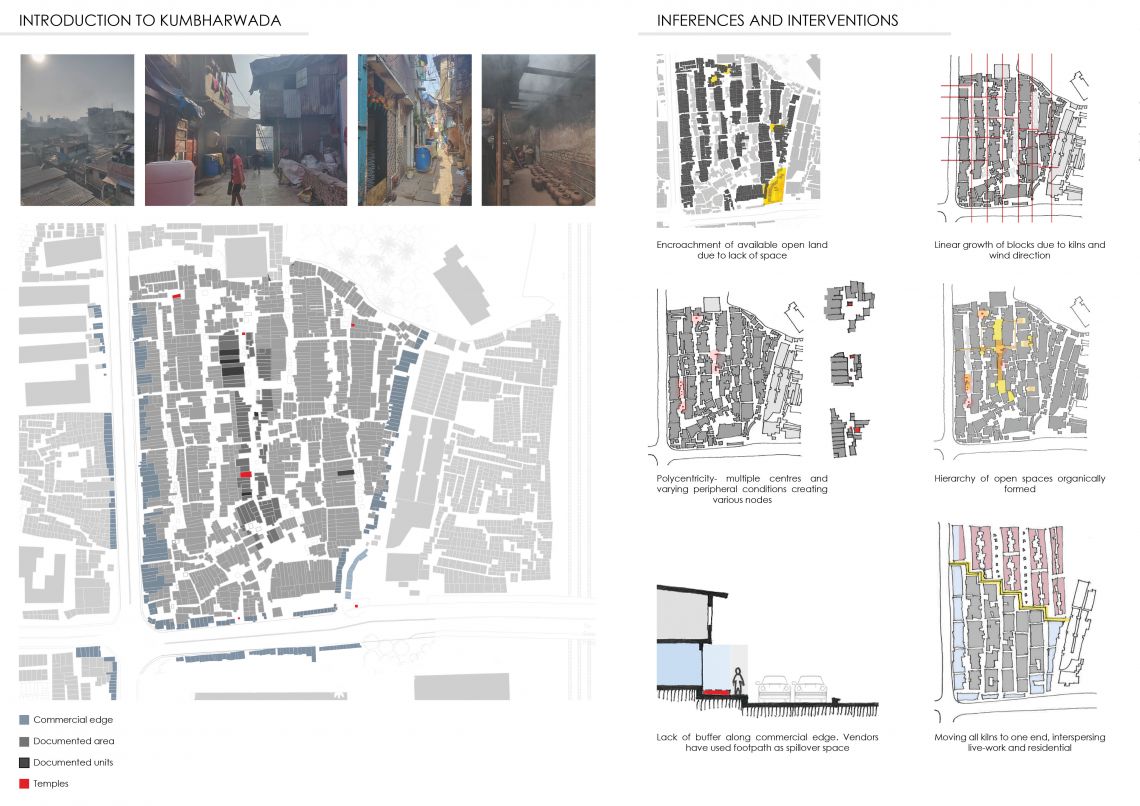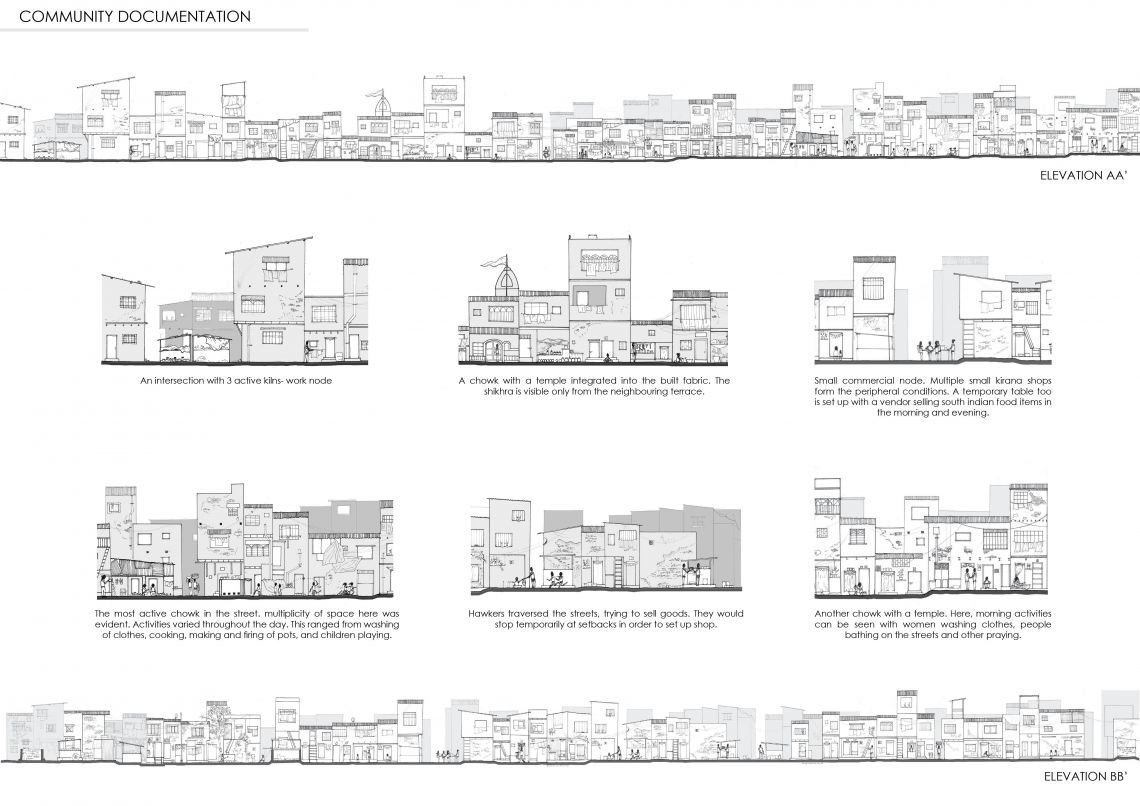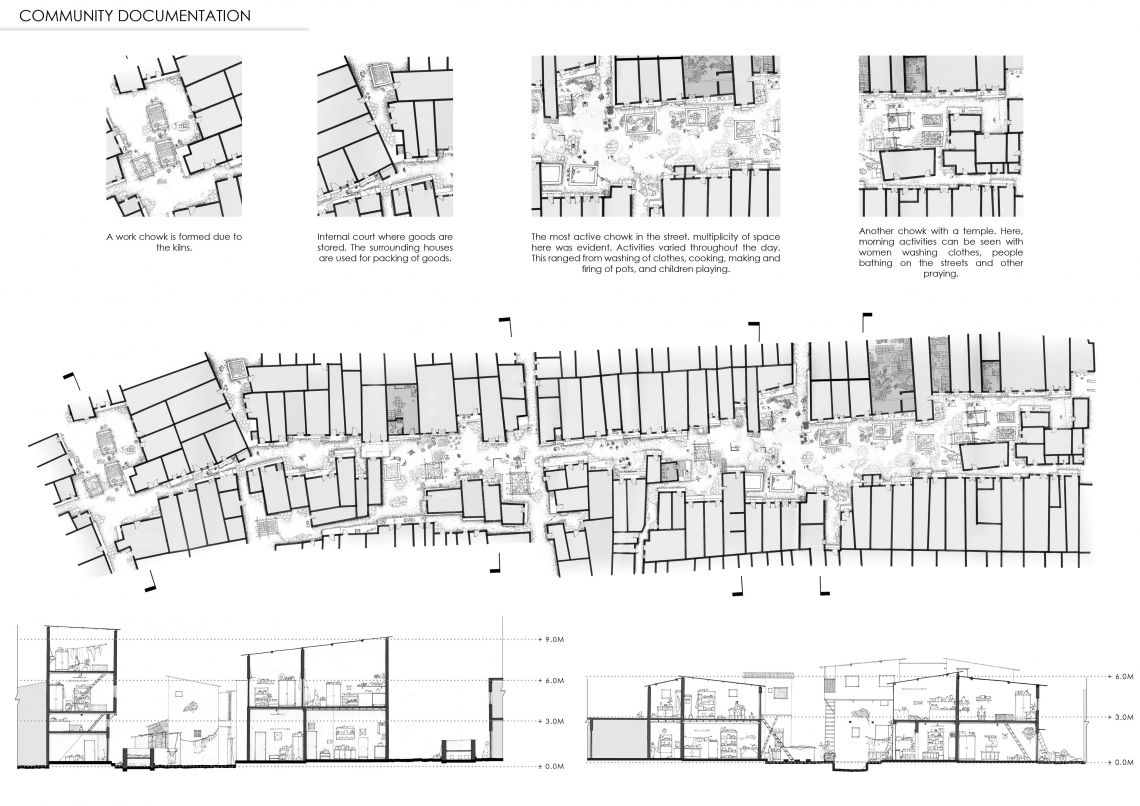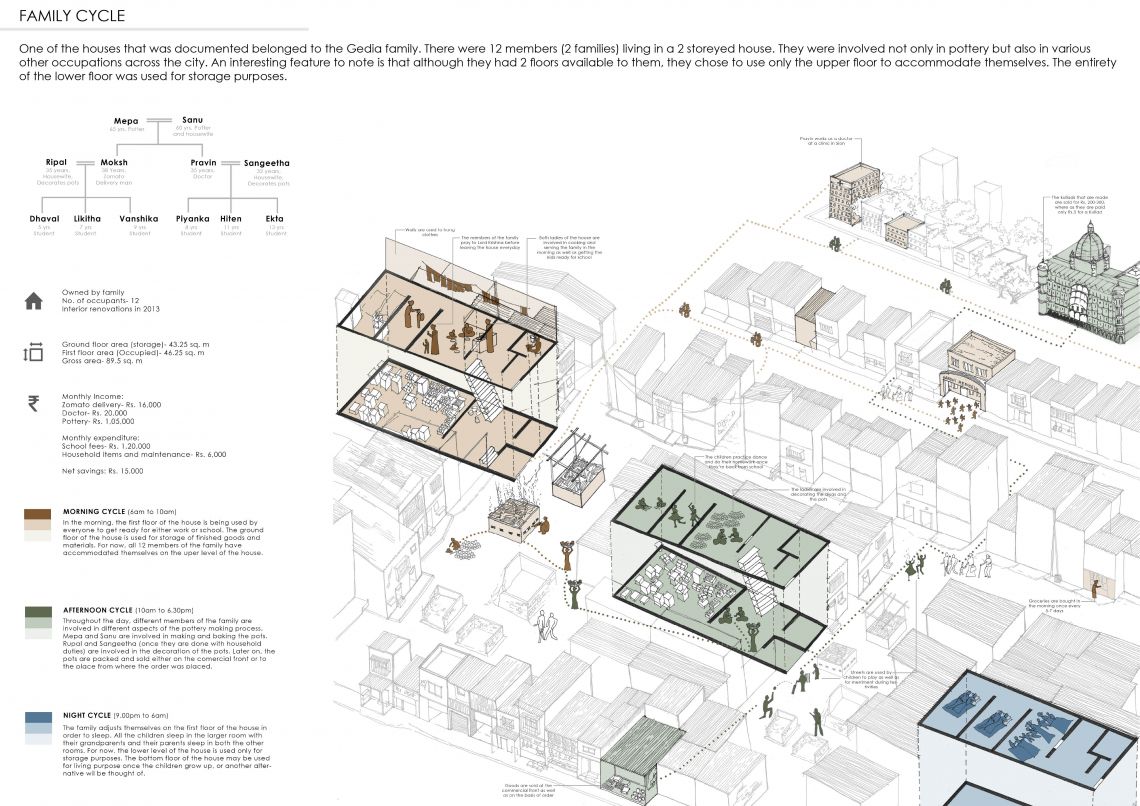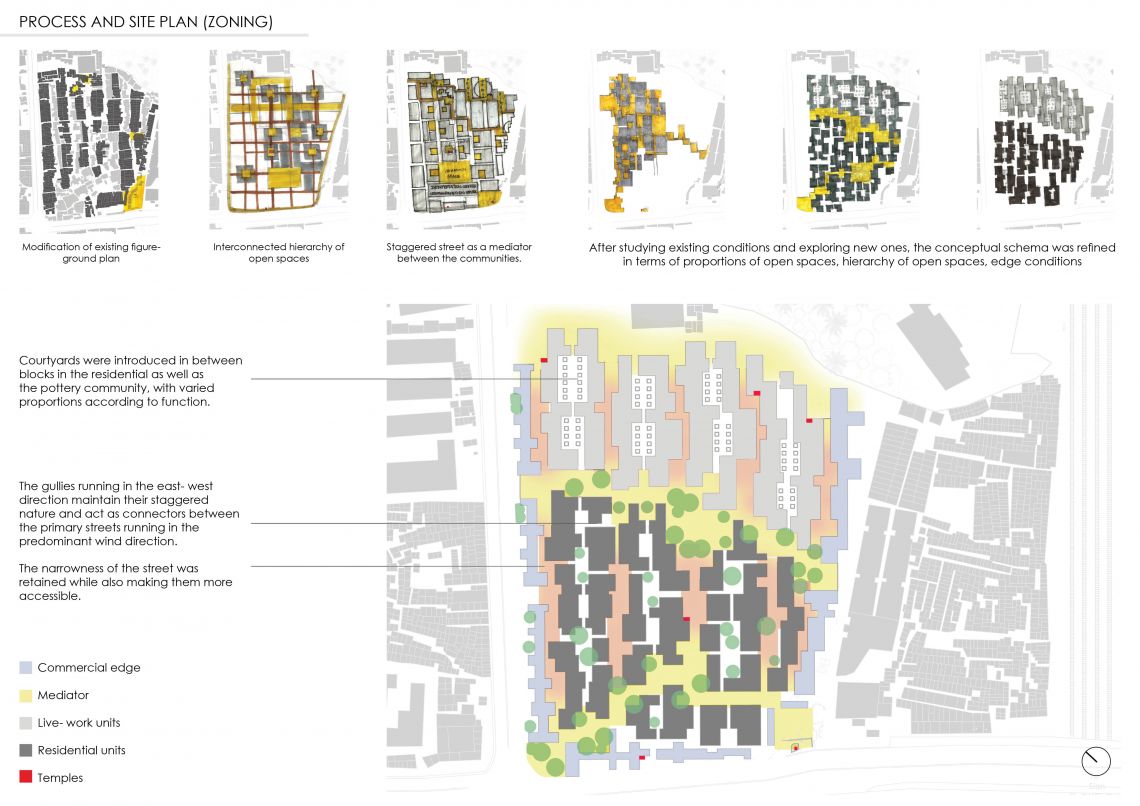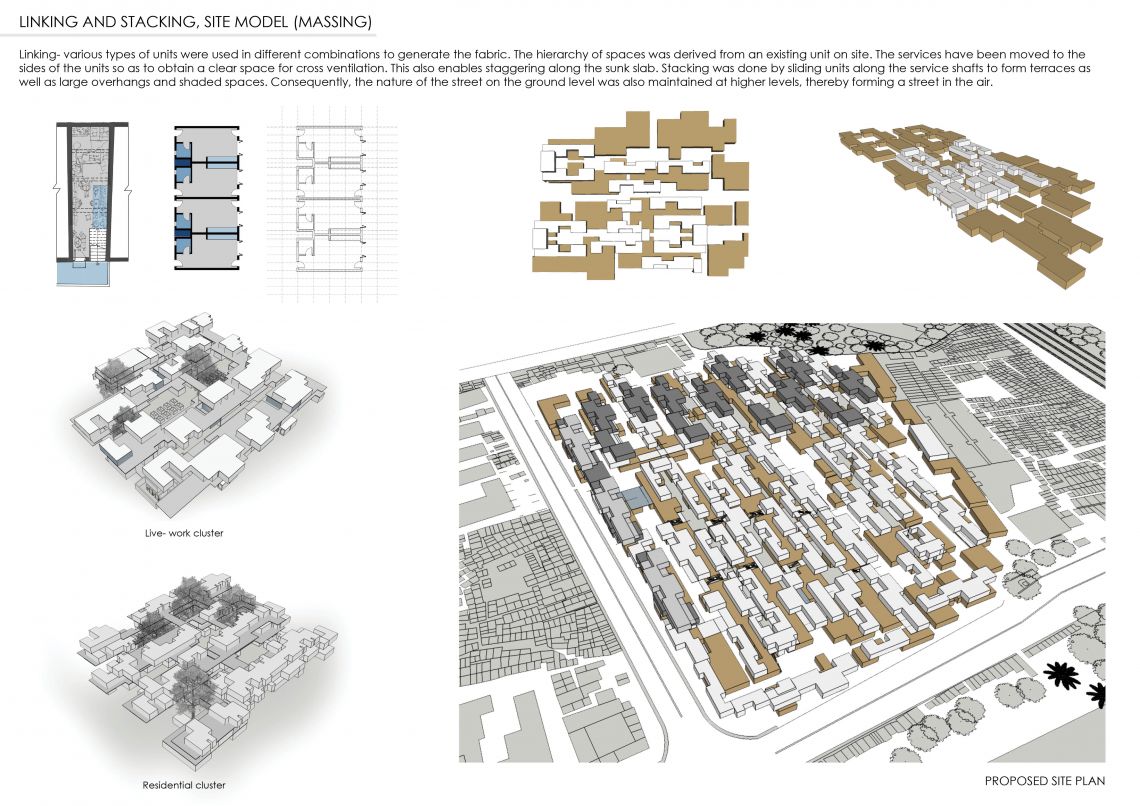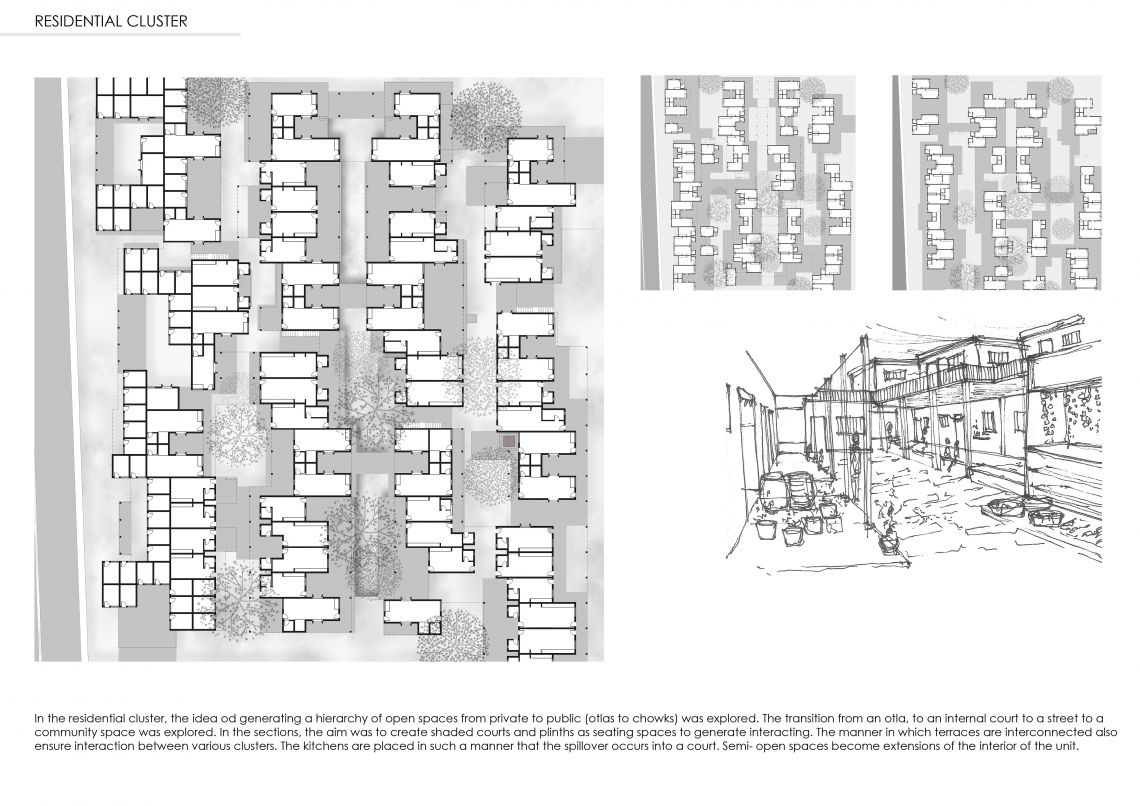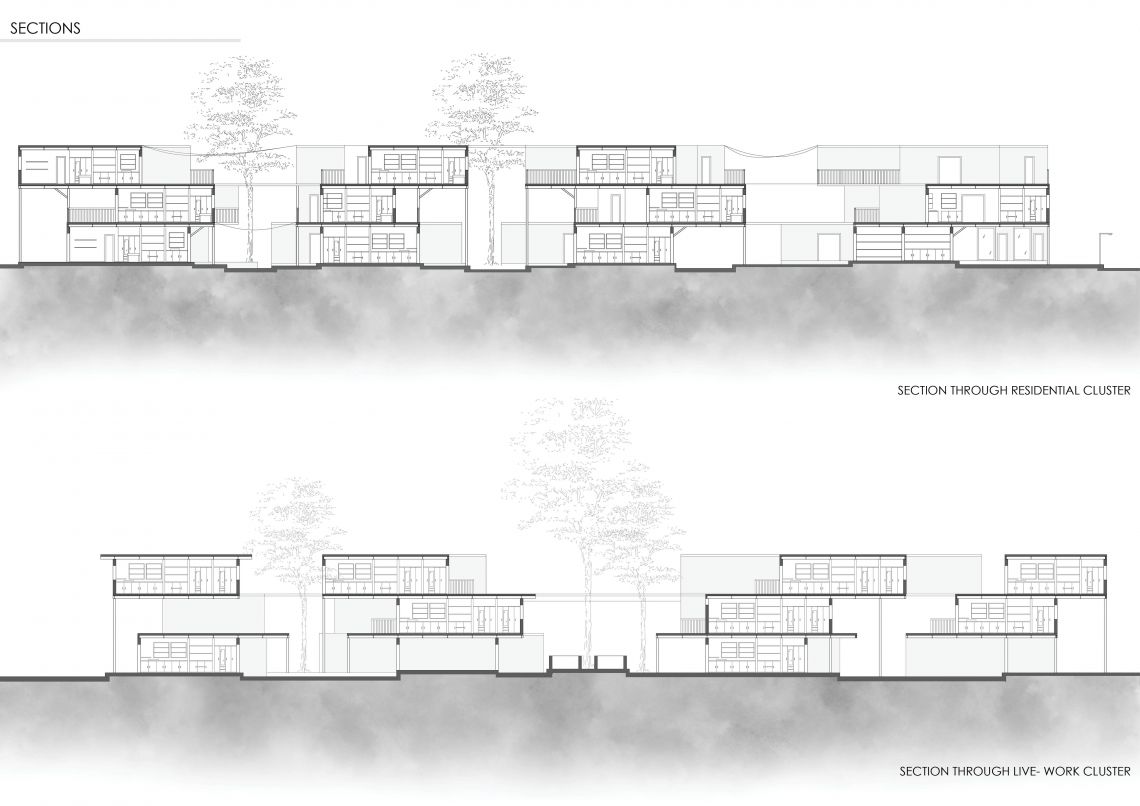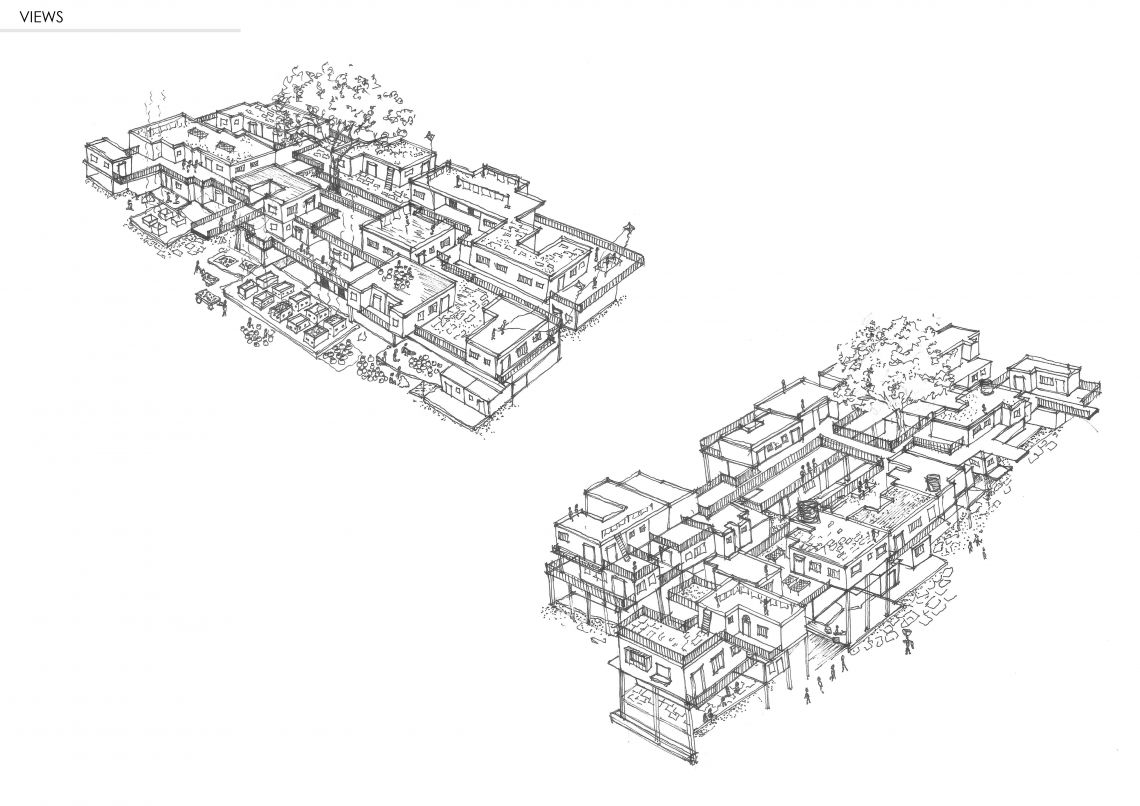Your browser is out-of-date!
For a richer surfing experience on our website, please update your browser. Update my browser now!
For a richer surfing experience on our website, please update your browser. Update my browser now!
Kumbharwada is one of the first settlements in Dharavi, built by migrants from Gujarat in the second half of the 19th Century. It’s home to the pottery industry, one of Dharavi’s most famous local crafts. Kumbharwada is made up of five lanes, dotted with over 120 kilns, with houses and workshops crowded around them. Most of the houses in Kumbharwada fall under the ‘live-work’ typology. In addition to pottery, the residents are also engaged in tailoring, embroidery, conduction tuition classes as well as running small clinics. Site area: 42,300 sq.m Built area: 230,300 sq.m Open area: 19,000 sq.m The approximate number of families: 1750- 2000 (300- 350 per lane). The aim of this project was to retain the nature of open spaces, as well as the built vs. open relationship. The nature of the street as experienced on the ground level is also replicated at higher levels. In addition to this, a hierarchy of open spaces has been generated in accordance with what already existed.
